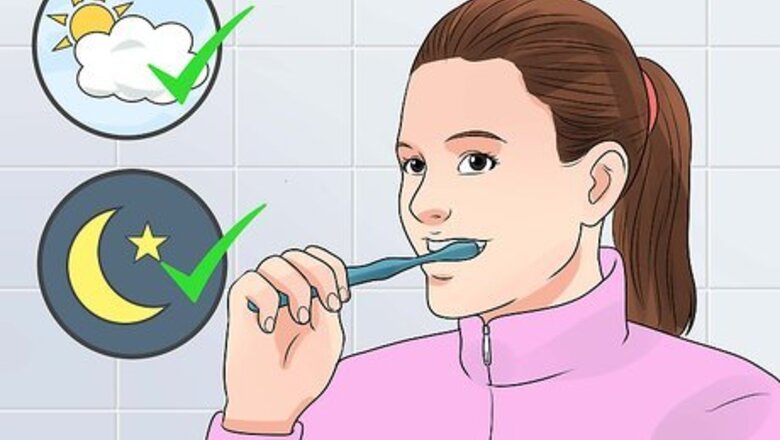
views
Brushing and Flossing
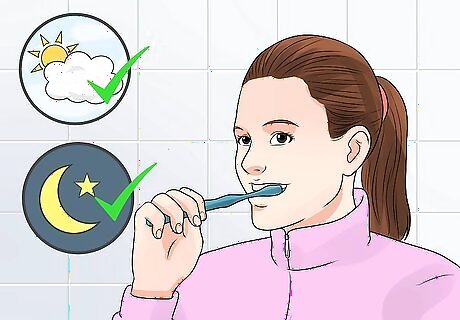
Brush two or three times a day. The first step to cleaning your whole mouth and ensuring you maintain good oral hygiene is brushing your teeth frequently and effectively. Normally it is recommended that you brush twice a day, once in the morning and once at night. You can add a third time after lunch, but don't brush more than three times a day. If you frequently brush more often than this, you risk wearing down your tooth enamel and damaging your gums. Each time you brush your teeth, you should do it for at least two minutes. Try dividing your mouth into four sections and giving each one thirty seconds to help you keep track.
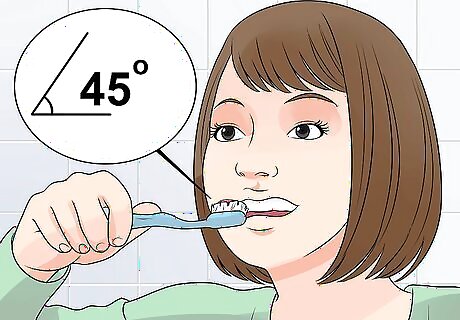
Get your technique right. When you are brushing your teeth, it's important to use the best technique to maximise the benefit and minimise the risk of damaging your gums or wearing down enamel. Start by placing your brush at a 45-degree angle to your gums. Move the brush back and forward gently in strokes that are about the width of a single tooth and then continue the movement by gently brushing the entire surface of your tooth with an up and down motion. Brush all the surfaces of the teeth, the outer surfaces, the chewing surfaces, and the inner surfaces. For the inner surfaces, tilt the brush up and brush up and down a few times for each tooth.
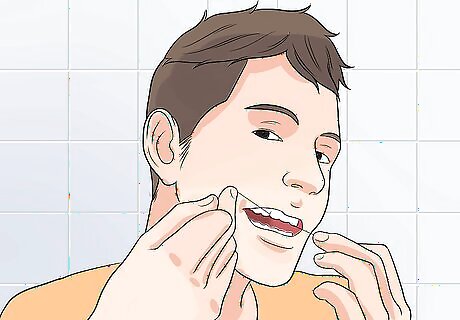
Floss regularly. Even if you're a diligent brusher, there some areas your toothbrush cannot reach. Flossing daily will help to remove any lingering substances that are caught between your teeth. Just like brushing, it is important to use proper technique to avoid any potential damage from scraping teeth and gums when flossing. Wrap a length of floss around the index fingers on each of your hands, so there are around two inches of floss between your hands. Keep the floss tight against the tooth to remove plaque and avoid rubbing the gums. Gently move the floss with a back and forth movement. Make sure that you use only gentle pressure to avoid hurting your gums with the floss. If you maintain a good flossing routine and technique you will have healthier teeth and healthier gums. You should floss your teeth once a day.
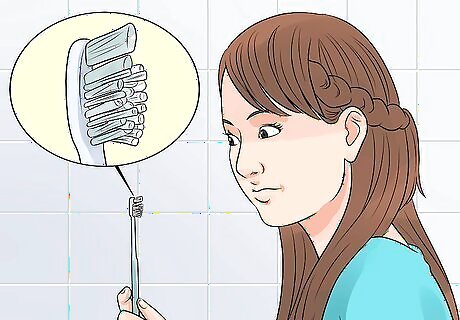
Choose the right equipment. When you are brushing your teeth, it's important that you have the right tools for the job. Use a soft-bristled brush that fits inside your mouth easily and enables you to reach all areas without any trouble. You should replace your brush every three or four months. If you notice the bristles are getting frayed, you should replace it sooner. Combine a good brush with a fluoride toothpaste that is approved by dental professionals. Look for a seal or marking on the package of the toothpaste to check it for a professional endorsement. Avoid using an abrasive toothpaste for more than two weeks in a row because it can wear down your tooth enamel and increase sensitivity
Cleaning Your Tongue

Brush your tongue. The most common and easiest way to clean your tongue is just by using your toothbrush. Brush your tongue from the back to the front to help remove plaque and discourage the growth of bacteria and the development of bad breath. Do not apply too much pressure when you brush your tongue. Go over your tongue with the toothbrush four or five times.
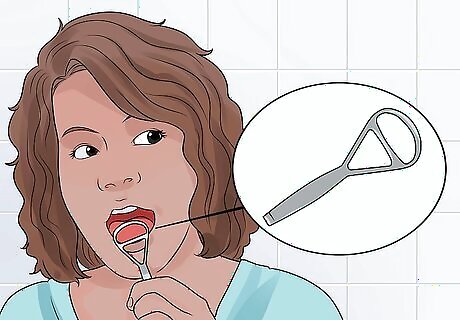
Use a special device. Although most people just brush their tongue with a toothbrush, these brushes are designed to work best on the smooth surfaces of your teeth. The bumpy and fleshy surface of your tongue is very different. Probably the best way to remove the coating of bacteria on the tongue is through scraping rather than brushing. It is possible to buy a device designed specifically for cleaning your tongue if you think using your toothbrush is not as effective as you would like. Tongue-scrapers can be used after you have brushed your teeth and flossed. You can find them in some health stores, pharmacies and online.
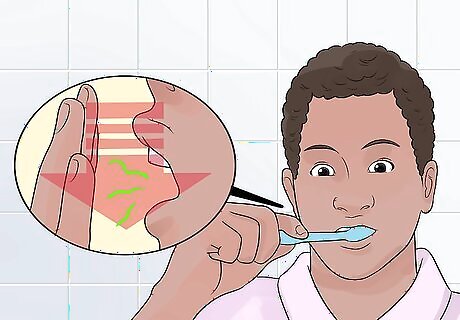
Understand the benefits. Although less emphasis is placed on cleaning the tongue than cleaning the teeth in oral care, up to 50% of the bacteria in your mouth will live on your tongue. Because of this, cleaning the tongue is an important part in the full oral care and should be included in an oral hygiene routine that cleans your whole mouth. Up to 80 or 90% of bad breath is thought to result from the bacteria on the tongue, so tackling this with good oral hygiene will lower the chances of you suffering halitosis.
Using a Mouthwash
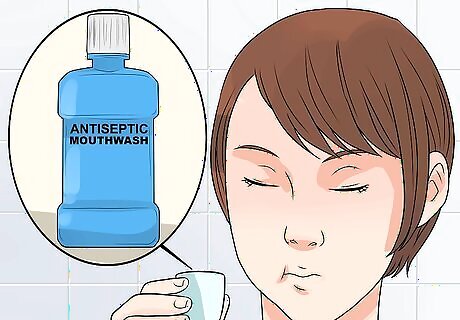
Rinse with your mouth with mouthwash. You can use mouthwash to make sure you reach every corner of your mouth. Mouthwash should never be used as an alternative to brushing and flossing, but it can be used as an additional cleaning method. Often people use mouthwash after brushing and flossing, but it makes no difference in what order you perform the three oral hygiene tasks. Try using mouthwash before going to bed to help protect your teeth from bacteria while you sleep. Specific products will have detailed instructions on how they should be used, but generally you will swish the liquid around in your mouth for thirty seconds to a minute before spitting it out.
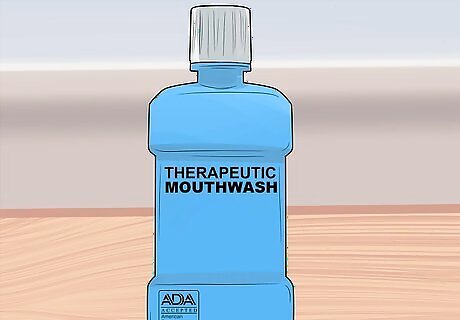
Choose a therapeutic mouthwash. You will find that there are a wide variety of mouthwashes available to buy in your local drug store or pharmacy. Therapeutic Mouthwash products can help you to reduce plaque, cavities, bad breath and conditions such as gingivitis. The alternative Cosmetic mouthwashes will not be as effective. They may temporarily control bad breath, but don't tackle the causes or contribute to your broader oral hygiene. Look for mouthwash that has a mark or seal from an official dental professional body endorsing it. Marked products have been assessed by experts and tested for effectiveness.
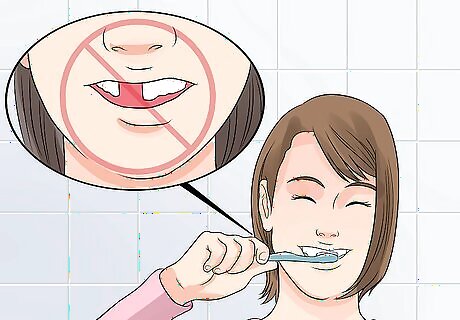
Understand the importance of oral hygiene. If you don't look after and clean your mouth, you risk developing gum infections, gum disease, cavities and tooth loss. The best way to care for your gums is to care for your teeth and mouth by brushing and flossing regularly. If you allow plaque to develop on your teeth, you may suffer from problems with your gums. If plaque is not removed it may harden into tartar, a substance which can only be removed by your dentist or dental hygienist.
Getting a Professional Clean
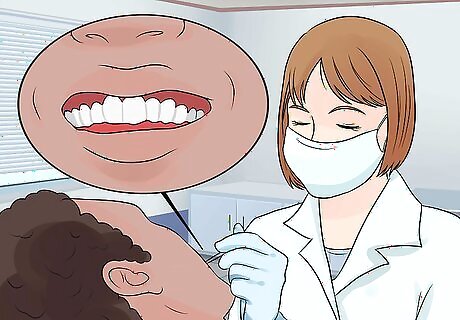
Consider a professional dental cleaning. One way to ensure you have a clean mouth is to visit your dentist or your dental hygienist and get a full dental cleaning. A dental cleaning will thoroughly and effectively use a professional brushing method to remove built up plaque and tartar, leaving your teeth feeling smooth and clean. The freshly clean and smooth surface of the teeth will make it harder for bacteria to fasten to your teeth, helping you keep your teeth clean after your visit.
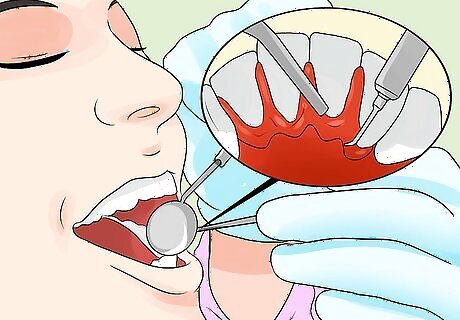
Know what to expect. The dental hygienist will use small dental tools, including a scraper, brush and a mirror. The hygienist might begin with an ultrasonic device which uses vibrations to knock loose larger pieces of tartar. Next, she will use a scraping instrument on your teeth to remove plaque. After this, the hygienist will brush your teeth with a specialised brush and toothpaste. After brushing, the hygienist, will floss and talk you through good oral hygiene practices. If you have opted for an extra fluoride treatment, this will take a few minutes and will work to strengthen and harden your teeth.
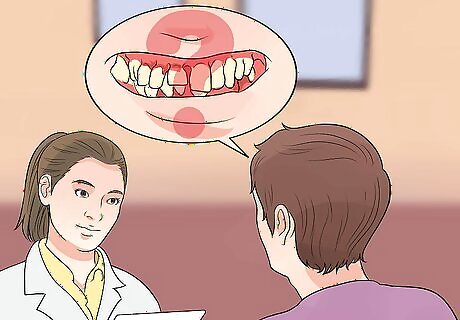
Don't consider it a one-off. Having a professional cleaning can help you maintain good oral hygiene and instill you with good dental care habits. Consider making visits to the dental hygienist a regular part of your dental care programme. Although people have been recommended to have cleanings twice a year, recent research suggests that once a year is sufficient for those who do not exhibit specific risk factors of tooth decay and gum disease. Key gum disease risk factors include smoking, diabetes, and genetics. Ask your dentist if you are unsure about whether you are at an elevated risk of gum disease.




















Comments
0 comment